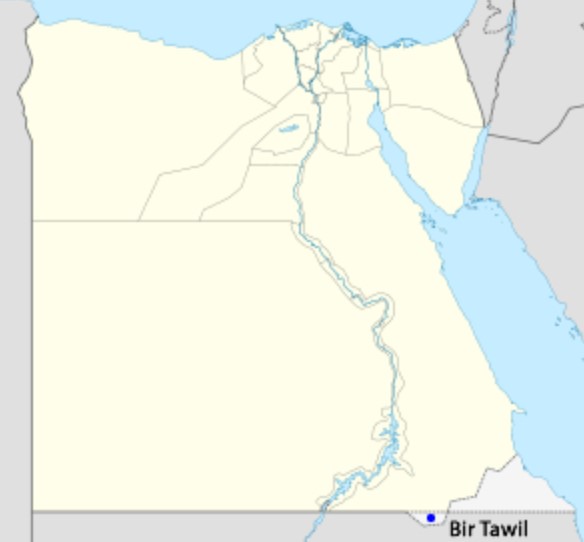The Land No One Wants
Roughly 30 percent of the Earth’s surface is land. And where there is land, there is a nation (or multiple nations) ready to claim it as its own. In fact, some of the world’s strangest disputes have been over pieces of land so small as to inspire bemused disbelief. Outside of Antarctica, almost every square foot of land is claimed by at least one nation.
Almost, because of an 800 square mile trapezoid-shaped piece of land call Bir Tawil.
Bir Tawil sits between Egypt and Sudan, as pictured above. And neither country wants the land; in fact, either would be quite happy if the other took it. The area is landlocked and barren. The terrain is dry and mountainous and no one lives there permanently; a century ago, a tribe of nomads used the area as grazing lands, but that has long since changed. “Bir Tawil” translates to “deep water well,” a name given to the area decades ago due to the presence of a well in the region (and literally nothing else), but even that well is long gone.
But Bir Tawil’s general worthlessness is not why neither country wants it. Rather, the nations don’t want it because it would preclude them from claiming the Hala’ib Triangle to Bir Tawil’s northeast. Much larger and with fertile soil bordering the Red Sea, the triangle is claimed by both Egypt and Sudan.
The dispute dates back to two edicts, one from 1899 and another in 1902. In 1899, the United Kingdom (which controlled the area) drew the northern border of Sudan at the 22nd Parallel, a straight line stretching eastward to the Red Sea. Under these borders, Egypt would control the Hala’ib Triangle while Bir Tawil (as these regions are called today) would fall to Sudan. But these borders had a small flaw. A group of people living in the triangle were both geographically and culturally closer to the Sudanese capital of Khartoum, but under the guise of Cairo. To fix this, in 1902, the UK decided to draw a jagged “administrative boundary” which placed the Triangle under the administration of Sudan — and, for some reason, carved out the divot known as Bir Tawil to be administered by Egypt.
Today, Egypt recognizes the 1899 border while Sudan claims the 1902 border to be true. As a result, no one wants Bir Tawil, making it the only place, outside of Antarctica, unclaimed by a nation.
Bonus fact: In October of 2006, the United States passed the “Secure Fence Act of 2006,” which endeavored to build a border fence across its southwest border with Mexico. The fence, however, does not track the border exactly because a treaty between the U.S. and Mexico prevents development in the Rio Grande floodplain in Texas. As a result, the U.S. built some sections of the fence about a mile north of the border, placing some Texans, still technically in the U.S., on the Mexican side of the fence.
From the Archives: Capture the Flag: Why Canada and Denmark squabble over a half-square mile piece of rock in the Arctic Circle.
Related: “The Second Book of General Ignorance” by John Lloyd and John Mitchinson. Mentions Bir Tawil and seems interesting. Five stars on three reviews.


Leave a comment